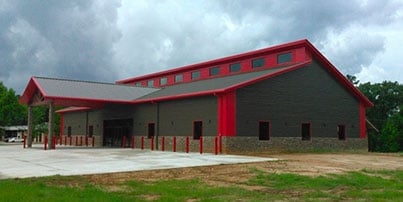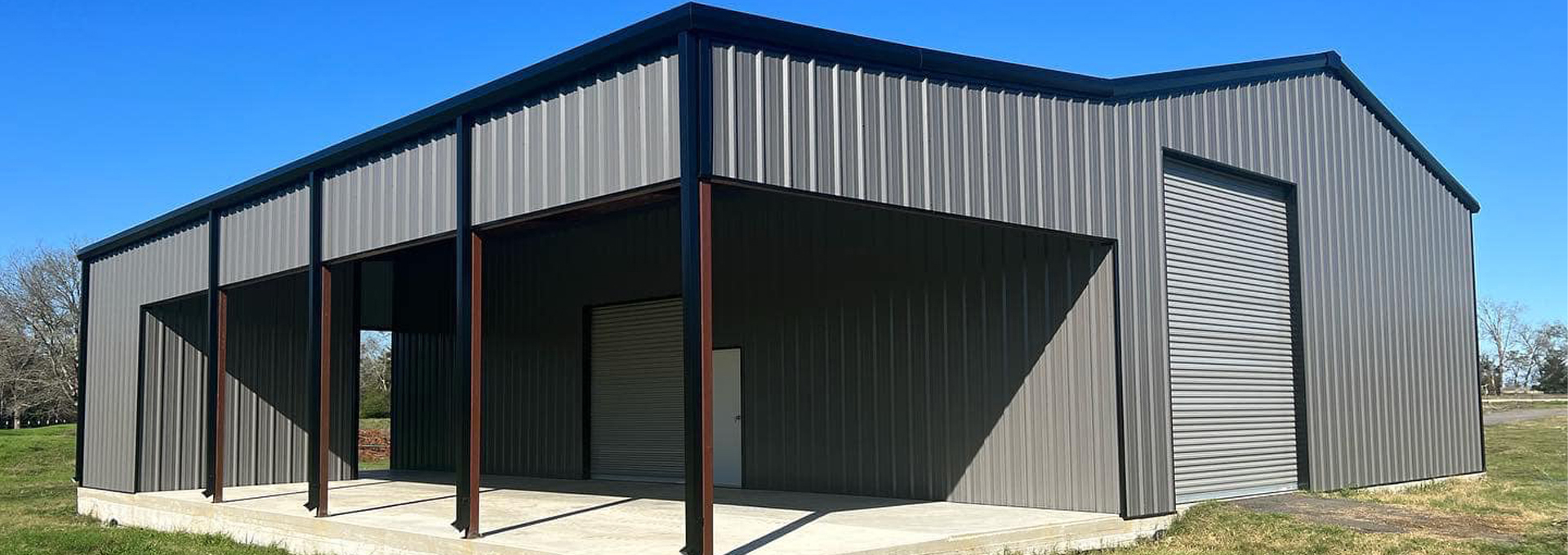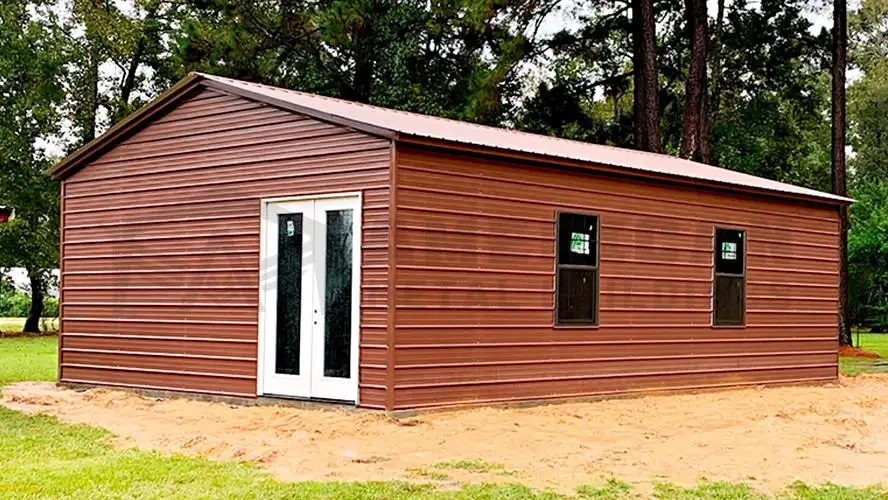Trusted Steel Buildings: Proven Solutions for Agricultural, Industrial, and Residential Requirements
Trusted Steel Buildings: Proven Solutions for Agricultural, Industrial, and Residential Requirements
Blog Article
Efficient Installation Practices for Steel Buildings: Improving Your Building Process
In the realm of construction, efficiency is a cornerstone of success. The process can be considerably structured by executing efficient installation practices when it comes to erecting steel structures. From thorough preparation to the use of pre-engineered elements, each step plays an essential function in speeding up the construction timeline. However, the key exists not only in rate however also in accuracy and top quality. By diving into the world of innovative setup techniques and ensuring rigorous high quality control steps, the potential for maximizing the entire construction procedure ends up being not simply an opportunity but a practical fact.
Preparation for Efficiency
When aiming to optimize performance in steel structure installment, meticulous planning is vital. Proper planning sets the foundation for a orderly and smooth building procedure, eventually conserving time and resources.

Furthermore, reliable communication amongst all stakeholders is vital throughout the preparation stage. Normal meetings and updates aid keep every person on the exact same web page, reduce misunderstandings, and promote a collaborative functioning environment - steel buildings. By investing time and initiative into careful planning, steel building setup can be implemented with accuracy and effectiveness
Making Use Of Pre-Engineered Components
Effective steel structure installation methods can be further enhanced by leveraging the use of pre-engineered parts. Pre-engineered components are created and made off-site to accurate specs, making certain compatibility and ease of assembly throughout the building procedure. By incorporating pre-engineered components such as beam of lights, trusses, columns, and panels, building contractors can streamline the installation process, minimize on-site labor demands, and lessen building and construction waste.
One trick advantage of utilizing pre-engineered components is the significant time cost savings they use. Given that these components are fabricated in a regulated environment, they reach the building site prepared for quick and effective installation. This not only accelerates the overall construction timeline but also helps to minimize project hold-ups and linked prices.
Additionally, pre-engineered elements are crafted for ideal performance and structural integrity, ensuring the long-term resilience and stability of the steel structure. By using these standard parts, contractors can achieve regular top quality across different tasks while additionally taking advantage of cost financial savings related to minimized material waste and labor expenses.
Maximizing Building Sequencing
To take full advantage of performance and efficiency in steel structure installment, calculated optimization of construction sequencing is vital. By meticulously planning the order in which tasks are implemented, construction teams can lessen downtime, lower material handling, and enhance the overall building process.

Applying Advanced Installment Techniques
Implementing sophisticated setup strategies boosts the efficiency and high quality of steel building construction jobs. By incorporating innovative methods such as computer-aided design (CAD) for accurate planning, prefabrication of elements off-site, and use of innovative equipment like robotic welders, construction teams can substantially enhance the installation process. CAD software program enables comprehensive 3D modeling, helping in the visualization of the final structure and guaranteeing accurate component measurements for an ideal fit during setting up. Prefabrication decreases on-site labor requirements and building time by producing building elements in a regulated setting, decreasing mistakes and remodel. The use of robotic welders increases the rate and precision of welding jobs, enhancing the overall structural honesty of the steel structure. Moreover, carrying out sophisticated techniques advertises safety and security by minimizing manual work needs and possible work environment risks. By embracing technology in setup practices, building and construction tasks can be completed much faster, with better outcomes, and within budget plan constraints.
Guaranteeing Top Quality Control
Building upon the use of advanced setup strategies, maintaining rigid quality assurance steps is extremely important linked here in ensuring the structural integrity and dependability of steel structure tasks. Quality control begins with the option of high-quality products that fulfill market criteria and specs. Routine examinations throughout the building process help determine any kind of discrepancies from the style or prospective concerns that can compromise the building's strength.
Documentation is a critical facet of quality control, making sure that all action in the installment procedure stick to the accepted regulations and plans. This includes recording inspections, material certifications, and any modifications made throughout building and construction. Applying a clear interaction method amongst staff member and subcontractors assists improve the quality assurance process and address any problems immediately.

Verdict
In conclusion, embracing reliable setup methods for steel structures is crucial for enhancing the building and construction process. By thoroughly preparing, making use of pre-engineered components, optimizing sequencing, carrying out innovative strategies, and ensuring quality assurance, building jobs can be finished quicker and efficiently. These methods not only save time and sources however additionally add to the total success of the task. It is important to prioritize efficiency in order to optimize productivity and accomplish successful results in steel building construction.
To take full advantage of productivity and efficiency in steel structure installment, calculated optimization of building sequencing is critical. Overall, by maximizing building and construction sequencing, steel building installation can be finished a lot more effectively, saving time and prices in the procedure.
Executing advanced installment methods enhances the performance and high quality of steel building construction tasks. By prioritizing quality control throughout the installment process, building teams can supply steel structures that view publisher site are not just effective yet additionally resilient and reliable.
In final thought, adopting effective installation practices for steel structures is crucial for improving the building and construction process.
Report this page